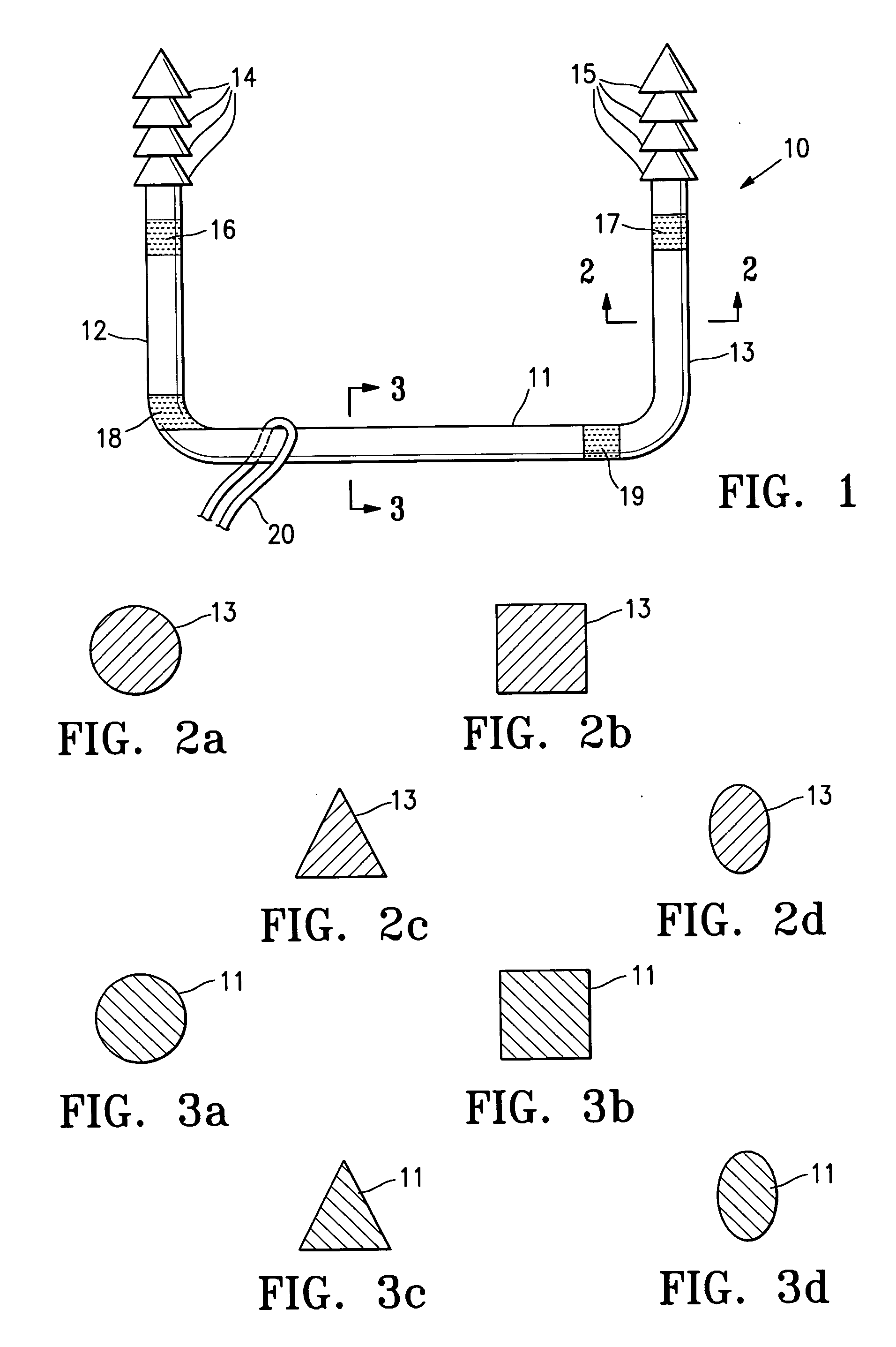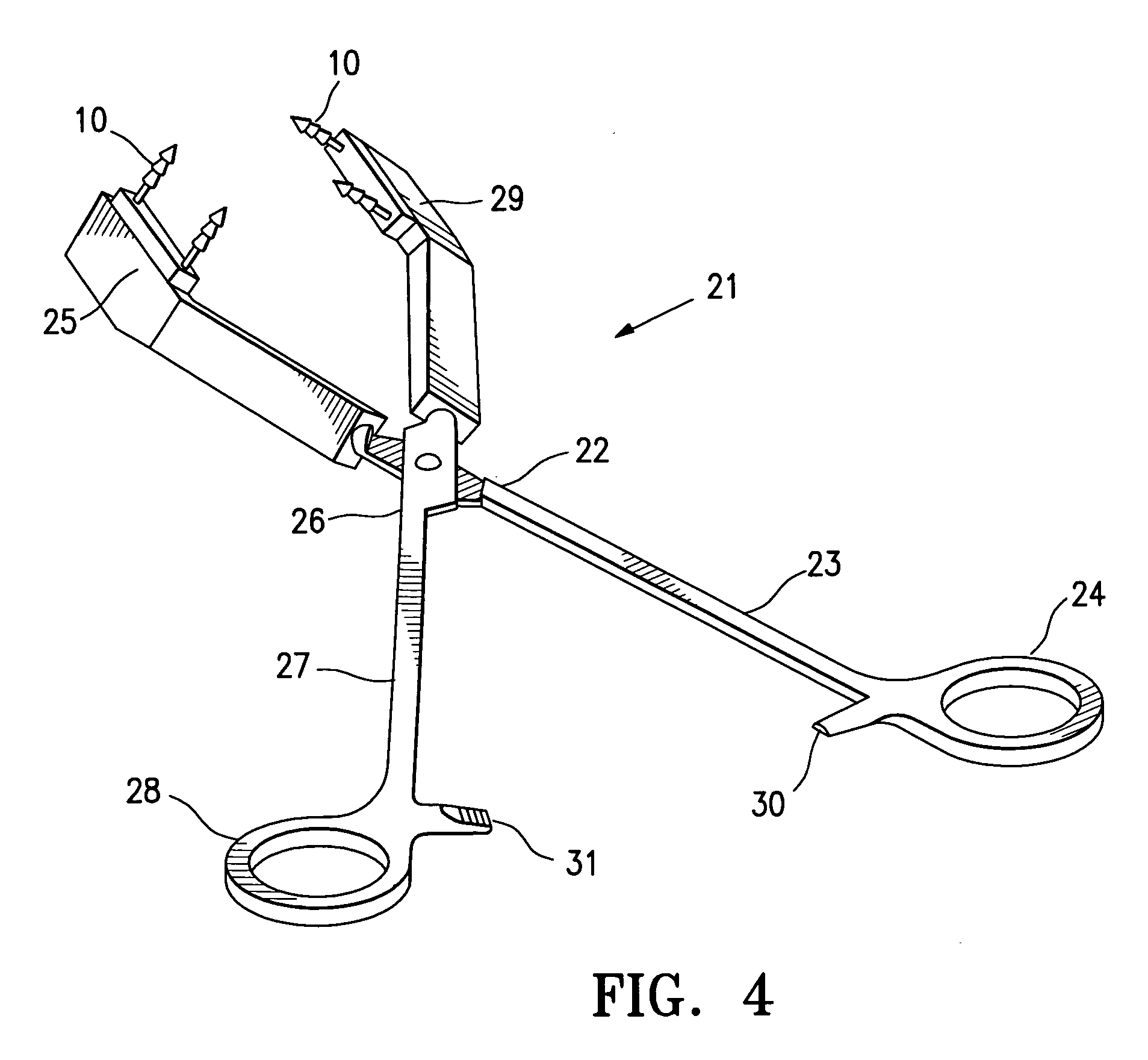Uterine artery occlusion staple
- Summary
- Abstract
- Description
- Claims
- Application Information
AI Technical Summary
Benefits of technology
Problems solved by technology
Method used
Image
Examples
Embodiment Construction
[0035]FIG. 1 illustrates a uterine artery staple 10 which has a pressure applying occlusion bar 11 which extends between two tissue penetrating legs 12 and 13. The legs 12 and 13 are provided with a plurality of protuberances or barbs 14 and 15 respectively which help to retain the legs of staple 10 in tissue after placement therein. At least part of the staple 10, illustrated at locations 16-19, is formed of a bioabsorbable material such as polylactic acid, polyglycolic acid or copolymers or blends thereof. When the staple 10 is deployed into the patient to occlude the patient's uterine artery, the occlusion bar 11 of the staple is retained for a prescribed length of time in a pressure applying condition against the patient's uterine artery for the occlusion thereof. After the prescribed length of time, the bioabsorbable material at one or more of the locations is absorbed, separating the retained portion of the staple, e.g. the legs from the pressure applying portion of the staple...
PUM
 Login to View More
Login to View More Abstract
Description
Claims
Application Information
 Login to View More
Login to View More - R&D
- Intellectual Property
- Life Sciences
- Materials
- Tech Scout
- Unparalleled Data Quality
- Higher Quality Content
- 60% Fewer Hallucinations
Browse by: Latest US Patents, China's latest patents, Technical Efficacy Thesaurus, Application Domain, Technology Topic, Popular Technical Reports.
© 2025 PatSnap. All rights reserved.Legal|Privacy policy|Modern Slavery Act Transparency Statement|Sitemap|About US| Contact US: help@patsnap.com



